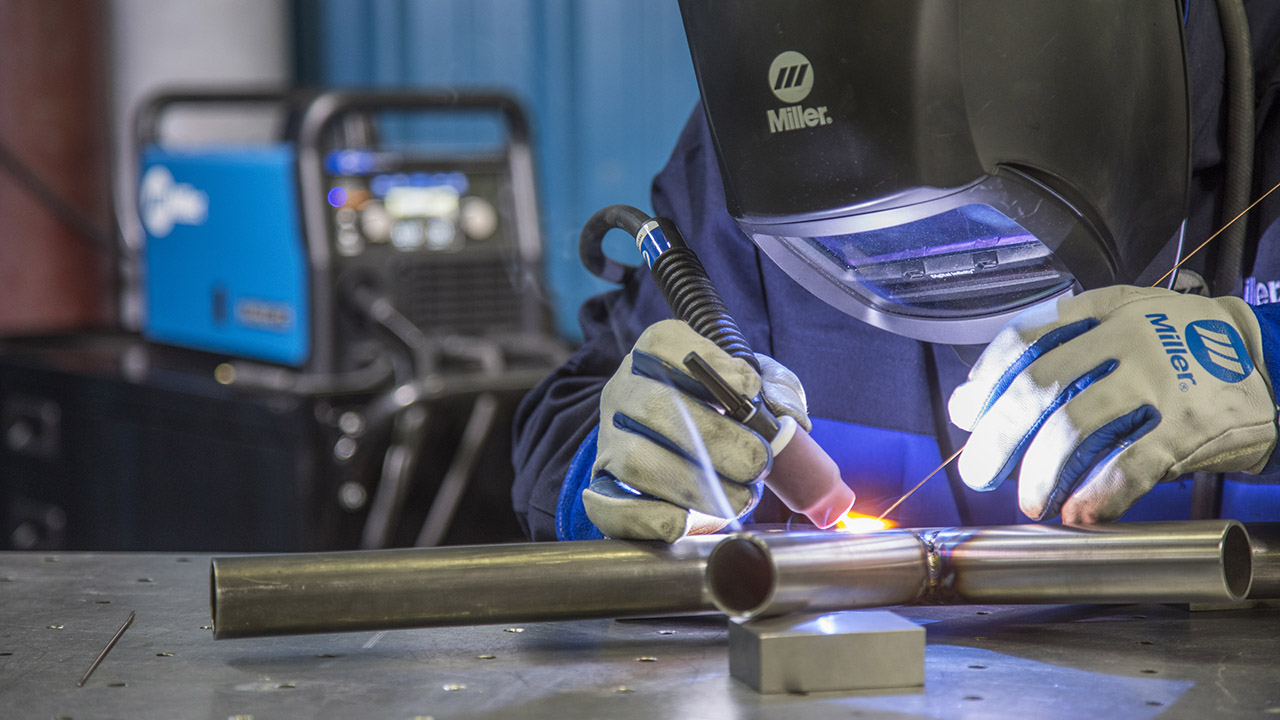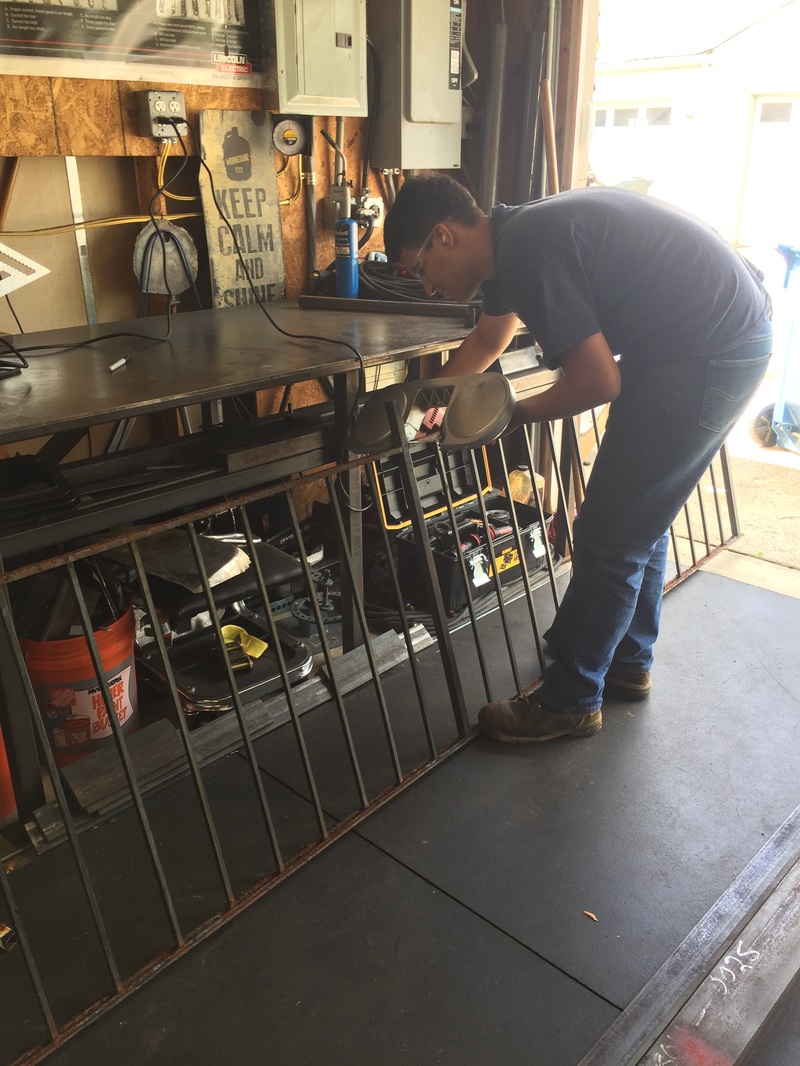Reliable fixes for poor fusion from Montana Mobile Welding and Repair
Wiki Article
Typical Welding Fixing Issues and Exactly How to Address Them Properly
Welding repair work often come across a variety of problems that can threaten the honesty of the last item. Typical problems include insufficient penetration, porosity, and imbalance, to name a few. Each issue provides special challenges that call for details techniques for resolution. Recognizing these problems is essential for welders intending to improve their abilities and outcomes. This conversation will certainly explore these typical welding repair service concerns and efficient techniques to address them.Insufficient Penetration
Inadequate infiltration takes place when the weld steel falls short to completely fuse with the base material, causing weak joints and potential structural failures. This problem frequently originates from not enough heat input, inaccurate electrode angle, or incorrect welding rate. Welders might run into insufficient penetration due to a miscalculation of the essential criteria for a particular material thickness or kind. Additionally, contamination on the base material's surface can impede reliable bonding, intensifying the issue. To resolve insufficient infiltration, welders need to guarantee suitable settings on their devices and preserve a clean work surface area. Regular inspection of welds is advised to recognize any kind of shortages early, permitting prompt modifications and the prevention of endangered structural stability in bonded settings up.Porosity
Porosity is a common issue in welded joints that materializes as tiny gas bubbles entraped within the weld metal. This issue can compromise the stability of the weld, bring about reduced stamina and prospective failing under stress and anxiety. Belgrade Fabrication. Porosity normally occurs from contamination, wetness, or inappropriate welding strategies, which allow gases to run away right into the liquified weld swimming pool. To deal with porosity, welders ought to assure proper surface area prep work, keep a tidy working atmosphere, and make use of appropriate welding criteria. Additionally, choosing the right filler product and shielding gas can minimize gas entrapment. Normal evaluation and screening of welds can assist recognize porosity early, assuring prompt rehabilitative actions are taken, thus preserving the high quality and reliability of the welded structureMisalignment
Imbalance in welding can emerge from numerous variables, including incorrect setup and thermal expansion. Comprehending the source is crucial for efficient resolution. Several correction strategies are available to realign parts and ensure structural honesty.Sources of Misalignment
Welding imbalance often stems from a range of underlying issues that can jeopardize structural stability. One key reason is inappropriate fit-up of parts before welding, which can lead to voids and unequal surfaces. Variants in thermal expansion throughout the welding process can also lead to distortion, especially if the materials being joined have different coefficients of growth. In addition, poor clamping and fixturing may fail to hold components firmly in location, causing activity throughout welding. Inadequately maintained devices, including welding machines and devices, may introduce incongruities in the weld bead, further adding to imbalance. Finally, operator mistake, stemming from insufficient training or experience, can likewise play a considerable role in creating misaligned welds.Correction Strategies Available
Resolving misalignment successfully calls for a mix of restorative techniques tailored to the details problems at hand. One usual approach is using jigs or components to hold components in the proper placement throughout welding, making sure regular placement. Furthermore, preheating the products can help in reducing distortion and enhance fit-up. For significant misalignment, mechanical adjustment techniques, such as utilizing hydraulic jacks or clamps, can be utilized to fix the placement before welding. Post-weld warmth treatment might also be essential to alleviate tensions triggered by misalignment. Mindful examination and change during the arrangement phase can prevent misalignment issues from ending up being substantial problems, promoting a smoother welding procedure and improving overall architectural honesty.Distortion
Distortion is a typical obstacle in welding that can occur from different elements, including irregular heating and cooling. Recognizing the sources of distortion is important for implementing effective prevention strategies. Resolving this issue not only improves structural integrity however additionally improves the overall high quality of the weld.Sources of Distortion
When based on the intense warmth of welding, materials frequently go through changes that can result in distortion. This phenomenon mostly develops from thermal development and contraction during the welding procedure. As the weld area warms up, the product increases; upon cooling, it gets, which can create internal anxieties. On top of that, unequal heating throughout a workpiece can exacerbate these tensions, leading to bending or flexing. The kind of product additionally plays a substantial duty; steels with varying thermal conductivity and coefficients of growth find more may react in a different way, leading to uncertain distortions. Inadequate joint layout and poor fixturing can contribute to imbalance throughout welding, increasing the probability of distortion. Recognizing these reasons is necessary for reliable welding repair work and avoidance methods.Prevention Techniques
Reliable prevention strategies for distortion throughout welding emphasis on managing warmth input and making certain appropriate joint layout. Preserving a constant heat input assists to decrease thermal development and tightening, which can lead to distortion. Using techniques such as pre-heating the work surface can additionally lower the temperature gradient, promoting uniform home heating. Furthermore, choosing appropriate joint designs, such as T-joints or lap joints, can improve stability and reduce stress and anxiety focus. Executing appropriate fixturing to protect the work surfaces in position additionally aids in preserving placement during the welding process. Finally, staggered welding series can disperse warmth much more equally, avoiding localized distortion. By using these methods, welders can substantially decrease the possibility of distortion and boost the total quality of their welds.Breaking
Fracturing is an usual concern experienced in welding repair services, frequently resulting from different elements such as incorrect cooling rates, material option, or insufficient joint prep work. The incident of cracks can significantly compromise the stability of the weld, leading to possible failures during procedure. To resolve this issue, welders need to initially analyze the origin, making sure that materials are suitable and appropriately chosen for the particular application. Additionally, regulating the cooling price throughout the welding process is vital; fast cooling can generate anxiety and lead to fracturing. Appropriate joint design and preparation likewise add to lessening the danger. Carrying out these methods can improve weld high quality and sturdiness, eventually minimizing the possibility of breaking in ended up weldments.
Incomplete Fusion
A considerable concern in welding repair services is insufficient combination, which occurs when the weld steel does not adequately bond with the base product or previous weld passes - Belgrade. This flaw can lead to weak points in the joint, possibly compromising the stability of the bonded framework. Variables contributing to incomplete combination include not enough warmth input, improper welding strategy, and contamination of the surfaces being signed up with. To resolve this issue properly, welders should ensure correct pre-weld cleansing and surface preparation, as well as change their welding criteria to achieve appropriate infiltration and fusion. Normal inspection throughout the welding process can likewise aid identify incomplete combination early, permitting prompt restorative procedures to boost the total top quality of the weldOverheating
While welding repair services can enhance structural integrity, overheating provides a significant challenge that can lead to material destruction. Extreme warmth throughout welding can alter the mechanical buildings of steels, causing decreased strength, raised brittleness, and warping. This sensation is specifically important in high-stress applications where structural reliability is extremely important. Identifying overheating can include visual try this out examinations for staining or distortion, as well as checking temperature throughout the welding procedure. To alleviate the threats connected with overheating, welders need to utilize proper strategies, such as controlling warmth input, changing travel rate, and using appropriate filler materials. In addition, implementing pre- and post-weld warm treatments can aid recover product properties and boost the general quality of the repair, guaranteeing long-term performance and safety.Often Asked Questions
What Are the Typical Indicators of a Welding Problem?

Exactly How Can I Evaluate My Welds for High quality?
To test welds for high quality, one can use visual assessments, ultrasonic screening, and radiographic approaches. Each strategy guarantees architectural integrity, determines flaws, and verifies adherence to defined standards, eventually enhancing the dependability of the welded joints.What Safety Preventative Measures Should I Take While Welding?
When welding, one ought to focus on safety and security by putting on suitable personal safety tools, ensuring appropriate ventilation, securing combustible materials away, maintaining a tidy work area, and being conscious of surroundings to stop injuries and accidents.Can I Repair a Weld Without Redoing the Entire Joint?
Repairing a weld without renovating the whole joint is possible, relying on the damages (Montana Mobile Welding and Repair Fabrication). Methods such as grinding, including filler material, or utilizing a welding procedure can properly attend to certain flaws while preserving the surrounding frameworkWhat Equipment Are Vital for Effective Welding Services?
Necessary tools for effective welding repair work consist of a welding equipment, cord brush, mill, safety equipment, clamps, and filler products. Each device plays an important duty in guaranteeing top quality and safety and security throughout the repair process. Porosity normally emerges from contamination, wetness, or incorrect welding strategies, which enable gases to get away right into the molten weld pool. Improperly kept equipment, consisting of welding devices and devices, may present variances in the weld bead, further contributing to imbalance. When subjected to the extreme warm of welding, materials frequently undertake adjustments that can lead to distortion. Cracking is an usual problem run into in welding repair work, frequently resulting from various elements such as incorrect air conditioning prices, product choice, or insufficient joint prep work. A substantial issue in welding fixings is insufficient blend, which happens when the weld steel does not appropriately bond with the base material or previous weld passes.Report this wiki page